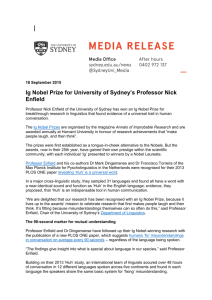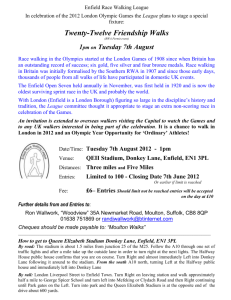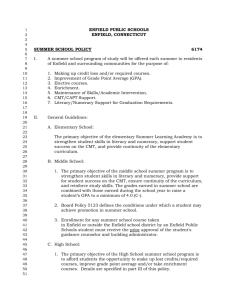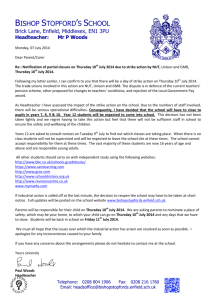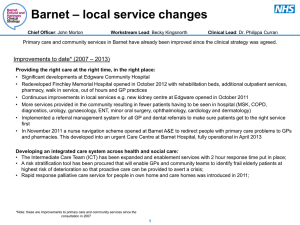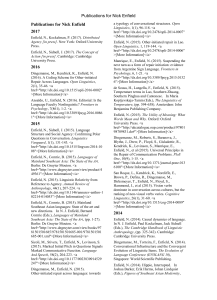Jo's presentation here
advertisement
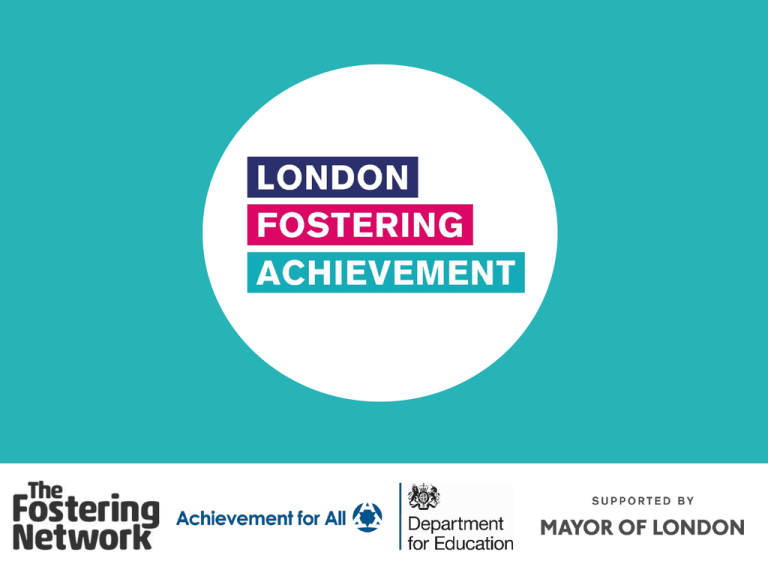
Understanding how schools manage Special Educational Needs and Disability (SEND) Enfield By the end of this session you will • • • • Understand what is meant by Special Educational Needs Know what the new Code of Practice expects of schools Know who the key people are that support SEND Understand which interventions are most effective for helping children with SEND • Understand what is meant by EHC plans • Have learnt about some examples of good practice in relation to SEND Dr Jo Lyons Deputy Regional Director Achievement for All 2 What is meant by SEND? A child and young person has SEN if they have learning difficulty or disability which calls for special educational provision to be made. Enfield A child or a young person has a learning difficulty or disability if they have significantly greater difficulty in learning than the majority of others of the same age, or has a disability which prevents or hinders them from making use of facilities of a kind generally provided for others of the same age in mainstream schools. 3 How do we decide if a child has SEND? The new Code of Practice say that schools might identify a child as having a special Enfield educational need where their learning difficulty or disability needs special provision that is different from, or additional to, that which is normally available to children of the same age to enable them to make progress Whether a child needs special provision depends on what outcomes need to be achieved. For many learning difficulties, good teaching by class teachers and interventions that available to all children will enable a child to make progress. A school will involve a specialist where a pupil continues to make little or no progress or where they continue to work at levels substantially below those expected of pupils of a similar age despite evidence-based SEN support delivered by appropriately trained staff 4 What are the categories of SEND? The new code of practice identifies 4 main areas of special educational Enfield Communication and interaction: speech, language and understanding others Cognition and learning: thinking and learning new skills Social, emotional and mental health difficulties: Sensory and or/ physical needs: includes hearing and there sensory problems. 5 Activity Enfield In small groups look at each of the 16 symptoms and decide which category of SEND each belongs to 6 Who will be involved with SEND at a school? • The class teacher or subject teacher: this is the most important person. They are responsible for the learning and progress of the child no matter who, or where, they are being taught. In a secondary school, the form tutor is also important • SENCo: special educational needs co-ordinator. This is the person who is responsible for making sure ALL SEND children achieve as well as they can Enfield 7 Who else might be involved? • • • • • • • • • • • Specialist teacher An HLTA A TA Educational psychologist Speech and language therapist Occupational therapist Clinical Psychologist Psychiatrist Counsellor Child’s social worker Designated teacher 8 How do schools plan for SEND Schools use a tiered or ‘wave’ approach to support special education needs Enfield good quality teaching. This is sometimes called Most learning needs can be tackled using ‘Quality First Teaching’ and means that the learning need of the child is clearly identified, and using good teaching practice the child is supported to take the next step in their learning. These are what needs to happen for QFT to help learning • Adults have high expectations • Lessons deepen the knowledge and understanding of the child • Lessons develop the whole child, across the curriculum and their social, psychological and emotional development • Teachers listen carefully and ask questions that enable the child to learn • Teachers know what every child’s next learning step is, and plan tasks that enable them to make these steps • Learning tasks are well matched to the pupil’s needs. This might include small group tasks or intervention groups • The child and their carers know what they need to do to improve their work and make the next learning steps 9 Activity Schools use a range of ways to help children make good progress. Enfield Which do you think are the most effective? You have 11 cards. Each one gives a possible method a school might use to support children with SEND to learn. Put aside 2 that you don’t think will have much impact on learning. Then arrange the others in a diamond, with the most effective at the top, and the least effective at the bottom 10 Enfield 11 Should my foster child go to a special school or PRU? It depends on what outcomes are needed for the child. The table below shows some of the advantages and disadvantages of special schools and PRUs Enfield Advantages Disadvantages • Might get specialist staff • Individual attention • A sense of community • The curriculum will not be as broad • The school may not be in the child’s community • Less role models • Less social interaction with a range of people 12 Educational Health and Social Care plans Enfield The new Code of Practice has introduced Education, Health and Social Care plans to replace ‘Statements’ Education, Health and Social Care must now legally work together to meet the needs of children with an EHC plan EHC plans will only be for children and young people whose needs cannot be met by support that is usually available in school or college or through the local offer EHC plans will continue until age 25 13 Personal budgets Under the new SEND reforms, personal budgets can be made available to families to pay for support for a child with SEND Enfield It is not yet clear how these budgets will be allocated or managed. The process is likely to be different for different local authorities. For CLA, the allocated social worker will be likely to manage this budget 14 Activity Enfield Autographs Everybody has a sheet with 10 statements on. For each statement, get a different person to give you an example. You cannot complete any part of your own sheet! But you can give other people ideas! 15 Plenary Enfield Questions? Comments? Thank you 16

